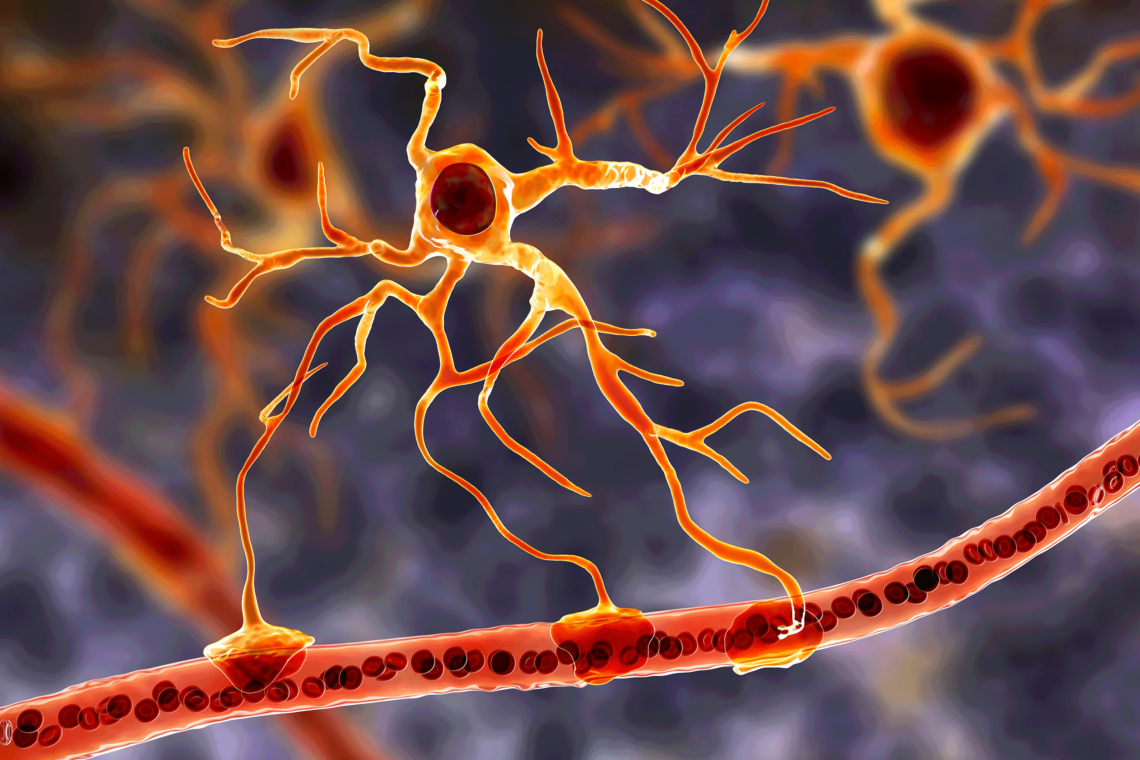Glial cells are often overshadowed by neurons in discussions about the brain. While neurons transmit electrical signals, glial cells play a crucial role in brain function. Research now shows that glial cells are more than just support cells—they influence cognition, neuroprotection, and disease prevention. Understanding their role could revolutionize neuroscience and medicine.
What Are Glial Cells?
Glial cells are non-neuronal cells in the brain and spinal cord. Unlike neurons, they do not transmit electrical signals, but they provide structure, protection, and essential functions that keep the nervous system working efficiently.
There are several types of glial cells:
- Astrocytes: Regulate blood flow, support metabolic functions, and maintain the blood-brain barrier.
- Microglia: Act as immune cells, removing debris and fighting infections.
- Oligodendrocytes (CNS) and Schwann Cells (PNS): Form myelin sheaths that speed up nerve signal transmission.
- Ependymal Cells: Help circulate cerebrospinal fluid.
How Glial Cells Influence Brain Function
1. Supporting Neurons and Enhancing Communication
Neurons depend on glial cells for survival. Astrocytes regulate neurotransmitter levels, ensuring smooth communication between neurons. Oligodendrocytes and Schwann cells form the myelin sheaths that allow rapid signal transmission. Without glial cells, the brain would not function efficiently.
2. The Role of Glial Cells in Learning and Memory
Glial cells contribute to neuroplasticity, the brain’s ability to adapt and reorganize. Astrocytes regulate synaptic connections, strengthening or weakening them based on neural activity. This process is essential for learning, memory formation, and cognitive flexibility.
3. Glial Cells and Brain Protection
Microglia act as the brain’s immune system, detecting and eliminating harmful substances. They remove damaged neurons and respond to infections, reducing inflammation. When microglia function properly, they protect the brain from neurodegenerative diseases.
4. Their Impact on Mental Health
Emerging research links glial dysfunction to mental health disorders. Changes in astrocyte activity are associated with depression, anxiety, and schizophrenia. Understanding these connections could lead to new treatments targeting glial cells to restore brain balance.
Glial Cells and Neurological Diseases
1. Alzheimer’s Disease
In Alzheimer’s, microglia fail to clear toxic protein buildups, contributing to cognitive decline. Scientists are studying ways to enhance microglial function to slow disease progression.
2. Multiple Sclerosis (MS)
MS damages myelin, disrupting nerve signal transmission. Since oligodendrocytes produce myelin, therapies aimed at repairing these cells could improve MS treatments.
3. Parkinson’s Disease
Astrocytes and microglia influence dopamine-producing neurons. Dysfunctional glial cells may accelerate neuron loss in Parkinson’s, making them a potential target for new treatments.
Future Directions: Harnessing Glial Cells for Therapy
Researchers are developing therapies that target glial cells to treat neurological conditions. Potential breakthroughs include:
- Stimulating microglia to enhance brain immune responses.
- Using stem cells to regenerate oligodendrocytes for MS treatment.
- Targeting astrocytes to regulate neurotransmitter imbalances in mental health disorders.
Glial cells are essential for brain health. Once thought to be secondary to neurons, they are now recognized as key players in cognition, neuroprotection, and disease prevention. As research progresses, glial cells could become central to innovative treatments for neurological and mental health disorders.

